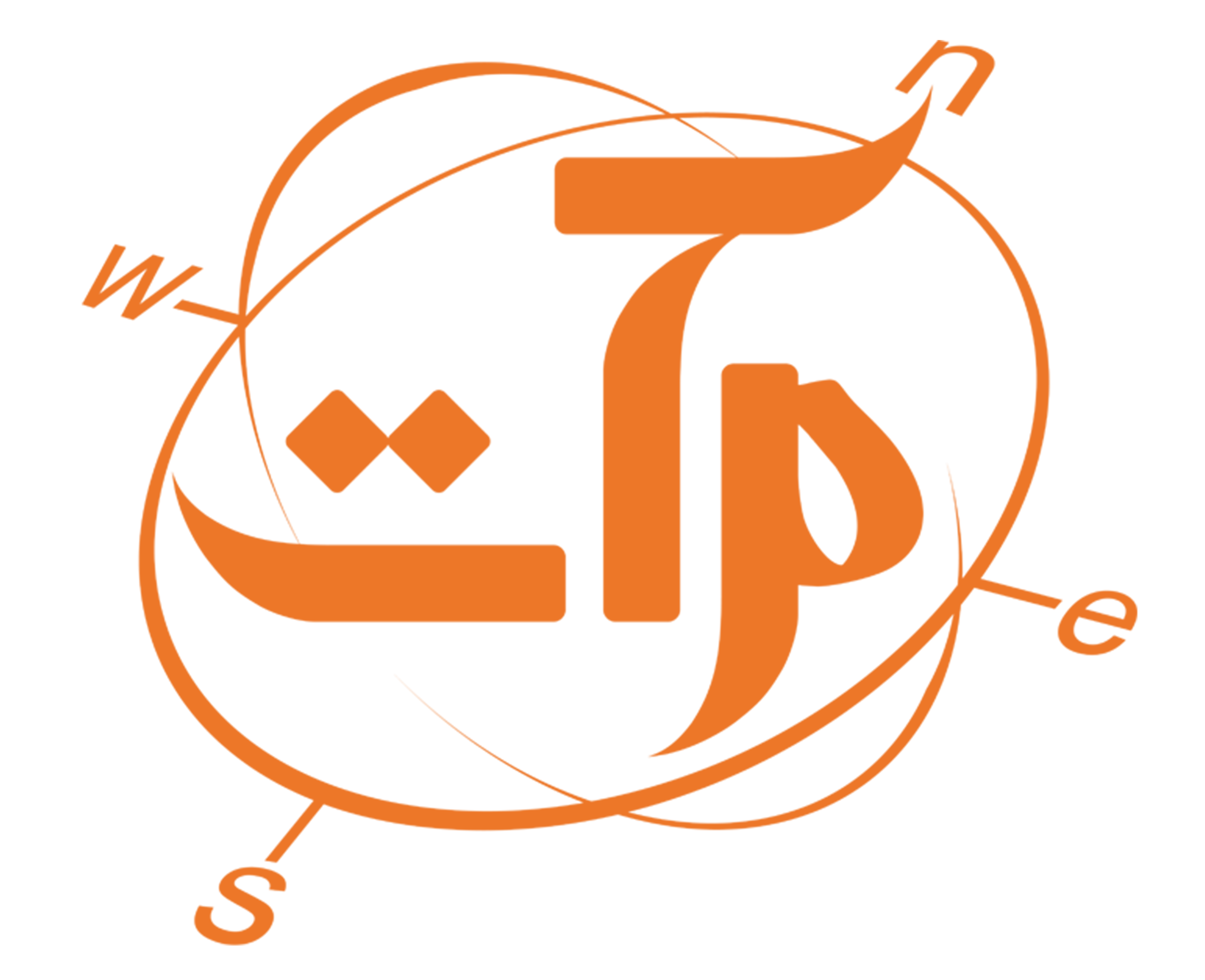
روایت حماسه، از نینوا تا ایران؛
نهضت عاشورا ادامه دارد
یک فعال رسانهای در یادداشتی اختصاصی نوشت: روایت غالب محرم امسال باید «روایت حماسه» باشد؛ حماسهای که خون امام حسین (ع) در قرن نخست بذر آن را افشاند و خون شهیدان ما در قرن پانزدهم شجره طیبهاش را آبیاری کرد.
به گزارش گروه سیاسی پایگاه خبری تحلیلی «مرآت»؛ یک فعال رسانهای در یادداشتی اختصاصی نوشت: محرم امسال در جغرافیایی آغاز میشود که بیش از همیشه بوی کربلا میدهد.
روزگار دوباره عاشورایی شده؛ نه بهصورت استعاری بلکه به شکلی عینی، شفاف و بیپرده و امروز که خاک غزه از خون اطفال بیگناه رنگین است و پرچم مقاومت از سینههای ستبر رزمندگان ایرانی و لبنانی و فلسطینی برافراشته چه کسی میتواند تردید کند که «کلّ یوم عاشورا و کلّ أرض کربلا» صرفاً یک شعار نیست بلکه راهبردی استراتژیک برای فهم و زیست در جهان معاصر است؟
محرم ۱۴۴۷ موسم بازخوانی این راهبرد است؛ زمانی برای احیای روایتی زنده، دقیق، اجتماعی و سیاسی از عاشورا، روایتی که نه در اشک متوقف میماند، نه در مرثیه خلاصه میشود بلکه در جهاد، در مقاومت، در شهادت و در مقابله با استکبار جهانی تجلی مییابد.
روایت غالب محرم امسال باید «روایت حماسه» باشد؛ حماسهای که خون امام حسین (ع) در قرن نخست بذر آن را افشاند و خون شهیدان ما در قرن پانزدهم شجرهی طیبهاش را آبیاری کرد و امروز ملت ایران از مرزهای شمالغرب تا خلیج فارس در ادامه همان حماسه تاریخی قامت استقامت برافراشتهاند و در مواجهه با طوفان تهاجمهای ترکیبی، رسانهای، فرهنگی، اقتصادی و نظامی ایستادهاند.
شهدای مقاومت، شهدای امنیت، شهدای حرم، و حتی شهدای اخیر جنگ تحمیلی با صهیونیسم فرزندان همان نهضت عاشورایند که «موت فی عزّ خیر من حیاة فی ذلّ» را در عمل معنا کردهاند و هر قطره خونشان سند زندهای بر امتداد تاریخی عاشورا در رگهای ملت ایران است.
در دوران ما دیگر نیازی به تحلیلهای پیچیده یا تطبیقهای ذهنی نیست چراکه خطوط جبههها بهروشنی رسم شدهاند و جبهه حق همان جبهه مقاومت است؛ جبهه ملتهایی که زیر پرچم امام حسین (ع) در برابر جبهه جهانی باطل ایستادهاند و جبهه باطل نیز چهرهای عریان دارد؛ رژیم صهیونیستی، دولت تروریست آمریکا، جریان نفاق داخلی، مزدوران رسانهای و سلبریتیهایی که زخم بر پیکر مقاومت میزنند و با ریشخند فرهنگ شهادت آب در آسیاب دشمن میریزند.
امروز هرکس در اردوگاه امام حسین (ع) است باید شمشیر بصیرت از نیام برکشد و حق را از باطل جدا کند و رسانههای عاشورایی باید صریح و صادق چهره یزیدیان زمان را افشا کنند و امتداد جبهه کوفیان را در صفوف رسانههای همدست با دشمن عیان سازند.
محرم امسال فرصتی است تا تصویر روشنی از وحدت ملی حول محور عاشورا ترسیم شود و این وحدت نه وحدت ظاهری و تحمیلی بلکه وحدتی برخاسته از ایمان مشترک، اندوه مشترک و آرمان مشترک بوده و کرد و لر و بلوچ، ترک و عرب، شیعه و اهل سنت، شهری و روستایی، زن و مرد، پیر و جوان همه در یک موکب و در یک صف هستند.
همین انسجام اجتماعی سرمایهای است بیبدیل که در مواجهه با فشارهای خارجی و تلاطمهای داخلی ایران را مقاوم، یکپارچه و باثبات نگاه داشته و هیئات مذهبی در واقع کارخانههای تمدنسازیاند که در آن هویت حسینی نسلهای انقلاب بازتولید میشود.
پیشبینیها و شواهد میدانی حاکی از افزایش چشمگیر حضور مردم در آئینهای عزاداری امسال است و این حضور یک کنش فرهنگی صرف نیست بلکه یک بیانیه عمومی، یک اعلام موضع ملی و یک صفبندی اجتماعی علیه جبهه باطل جهانی است.
همانگونه که راهپیمایی اربعین به یک مانور عظیم تمدنی بدل شده عزاداریهای محرم امسال نیز میتواند پیام وحدت، ایمان، ایستادگی و دشمنستیزی را بهوضوح به گوش جهانیان برساند و باید روایت شور و شکوه این جمعیتهای مؤمن، هوشمندانه و هنرمندانه در رسانههای ملی و مردمی بازتاب یابد.
یاد شهیدان اخیر در تقابل با رژیم صهیونیستی و تروریستهای منطقهای نباید در هیاهوی رسانهای فراموش شود و شهیدان جبهه مقاومت از تهران تا خوزستان، از زاهدان تا کرمانشاه، حاملان پرچم عاشورا در عصر ما هستند و باید سیره و زندگیشان بازخوانی شود و روایت حماسهشان در هیئات، منابر و حتی نقالیهای سنتی بازآفرینی گردد.
یکی از جلوههای مردمی عاشورا روضههای خانگی در شهرها و روستاهاست؛ محافلی که ساده و بیتکلفاند اما پر از نور، معرفت و آگاهیاند و این مجالس کوچک سنگرهای فرهنگی بزرگیاند که ایمان نسل جدید را حفظ و تقویت میکنند.
در عصر رسانههای مجازی باید روایت این محافل نیز در قابهای فاخر تصویری و متون هنرمندانه بازتاب یابد چراکه این روضهها پادزهر هر غفلتاند.
حضور پررنگ نوجوانان در آئینهای محرم یک اتفاق نیست؛ یک جریان تاریخی بوده و نسل دهه نودی نسلی است که نهتنها مخاطب عاشورا که حامل آن است و این نسل با حضور فعال در هیئتها، با یادگیری مفاهیم مقاومت و با اشتیاق به روحیه جهاد اثبات کرده که عاشورا در آینده نیز سربازانی وفادار خواهد داشت.
فرهنگ عزاداری حسینی پیراهن سیاه نیست؛ پرچم سرخ است و روحیه جهاد، شهادتطلبی و دشمنستیزی باید در جان مراسم محرم جاری باشد و مداحیهایی که صرفاً مویهاند دیگر پاسخگو نیستند و امروز هر نوحه، باید پیامآور حماسه باشد و هر مجلس باید افشاگر دشمن باشد.
مردم ایران در نبرد با آمریکا و دشمن صهیونی عاشورایی فکر میکنند، حسینی میزیند و زینبی سخن میگویند و این ملت اهل تسلیم نیست و اهل قیام است.
محرم امسال یک فرصت تاریخی است؛ فرصتی برای بازتعریف گفتمان مقاومت، برای تجدید بیعت ملی با جبهه حق و برای افشای بینقاب چهره دشمن و اگر این فرصت را درست دریابیم نهضت عاشورا نه تنها بیش از پیش تجلی میابد بلکه آینده جهان را نیز حسینی خواهد کرد.
یادداشت: کوثر سعیدیان-یک فعال رسانهای
According to the news and analytical outlet Meraat a media activist writes in an exclusive op-ed:This year, Muharram begins in a geography that smells of Karbala more than ever before.
The times have become Ashura-like again—not metaphorically, but tangibly, visibly, and unmistakably. Today, as the soil of Gaza is stained with the blood of innocent children, and the flag of resistance is hoisted from the proud chests of Iranian, Lebanese, and Palestinian fighters, who can still doubt that “Every day is Ashura, and every land is Karbala” is not just a slogan but a strategic roadmap for understanding and living in the contemporary world?
Muharram 1447 is a season for revisiting this roadmap—a time to revive a living, precise, social, and political narrative of Ashura. A narrative that does not stop at tears, is not confined to elegies, but finds its true expression in jihad, resistance, martyrdom, and confrontation with global arrogance.
The dominant narrative of this Muharram must be a narrative of heroism—a heroism whose seeds were sown by the blood of Imam Hussain (a) in the first century, and whose pure tree has been watered by the blood of our martyrs in the fifteenth. Today, the Iranian nation, from the northwestern borders to the Persian Gulf, stands tall in continuation of that eternal epic, resisting the storm of hybrid, media, cultural, economic, and military invasions.
The martyrs of the Resistance, the martyrs of national security, shrine defenders, and even the recent martyrs of the imposed war with Zionism are all children of the same Ashura movement, who gave real meaning to the creed that “Death with dignity is better than life in humiliation.” Every drop of their blood is a living testament to the historical continuity of Ashura flowing through the veins of the Iranian people.
In our era, there is no need for complex analyses or abstract comparisons—because the battle lines are clearly drawn. The camp of truth is the Resistance; the nations who stand under the banner of Imam Hussain (a) against the global front of falsehood. And the falsehood is fully exposed: the Zionist regime, the terrorist U.S. government, internal hypocrites, mercenary media operatives, and celebrities who mock the culture of martyrdom and pour salt on the wounds of Resistance—all belong to the camp of Yazid.
Today, whoever stands in Imam Hussain’s (a) camp must unsheathe the sword of insight and clearly distinguish truth from falsehood. Ashura-inspired media must boldly and honestly expose the faces of today’s Yazids and unveil the modern-day Kufan collaborators within the enemy-aligned media ranks.
This Muharram is an opportunity to illustrate the image of national unity centered around Ashura. This unity is neither superficial nor coerced—it springs from shared faith, shared grief, and shared aspirations. Kurds and Lors, Baluchis and Turks, Arabs, Shias, Sunnis, urban and rural, men and women, old and young—all stand in one caravan, in one row.
This social cohesion is an invaluable asset that has kept Iran resilient, unified, and stable amid external pressures and internal tremors. Religious gatherings and mourning processions are in fact factories of civilization-building, where the Hussaini identity of revolutionary generations is continuously regenerated.
Field observations and cultural trends indicate a notable surge in participation in this year’s mourning rituals. This presence is not a mere cultural expression—it is a public statement, a national declaration, and a social alignment against the global front of falsehood.
Just as the Arbaeen march has become a great civilizational maneuver, the Muharram mourning processions of this year can also loudly proclaim to the world the messages of unity, faith, resilience, and anti-imperialism. The passion and grandeur of these faithful masses must be reflected wisely and artistically across national and grassroots media.
The memory of the recent martyrs who confronted the Zionist regime and regional terrorists must not be lost in the media noise. From Tehran to Khuzestan, from Zahedan to Kermanshah, these Resistance martyrs carry the banner of Ashura in our era. Their lives must be revisited, their path narrated in religious gatherings, sermons, and even in traditional storytelling circles.
One of the most genuine expressions of people’s connection to Ashura are the household mourning gatherings held in cities and villages—humble yet radiant assemblies filled with light, awareness, and spirituality. These small majlis are great cultural trenches that safeguard and nurture the faith of the new generation.
In the age of digital media, the spirit of these gatherings must also be captured through eloquent visuals and artistic storytelling. These home-based rituals are the antidotes to societal negligence.
The strong presence of teenagers in Muharram rituals is no coincidence—it’s a historical current. The generation of the 2010s is not only a recipient of the Ashura legacy but its bearer. With active participation in processions, absorption of resistance concepts, and a thirst for the spirit of jihad, they have shown that Ashura will continue to have loyal soldiers in the years to come.
The culture of Hussaini mourning is not merely a black shirt—it is a red flag. The spirit of jihad, martyrdom, and enemy-denunciation must flow at the heart of Muharram ceremonies. Lamentations that are merely weeping no longer suffice. Every elegy must be a call to heroism. Every gathering must unmask the enemy.
The people of Iran think with Ashura, live with Hussain, and speak with Zainab. This nation is not one of surrender—it is a nation of uprising.
This Muharram is a historic opportunity: a moment to redefine the discourse of resistance, to renew the national pledge of allegiance to the camp of truth, and to expose the enemy’s unmasked face. If we seize this moment wisely, the Ashura movement will not only shine brighter but also shape the future of the world in a Hussaini light.
Op-ed by: Kosar Saeidian – Media Activist
لینک کوتاه خبر
برچسبها
نظر / پاسخ از
هنوز نظری ثبت نشده است. شما اولین نفری باشید که نظر میگذارید!



